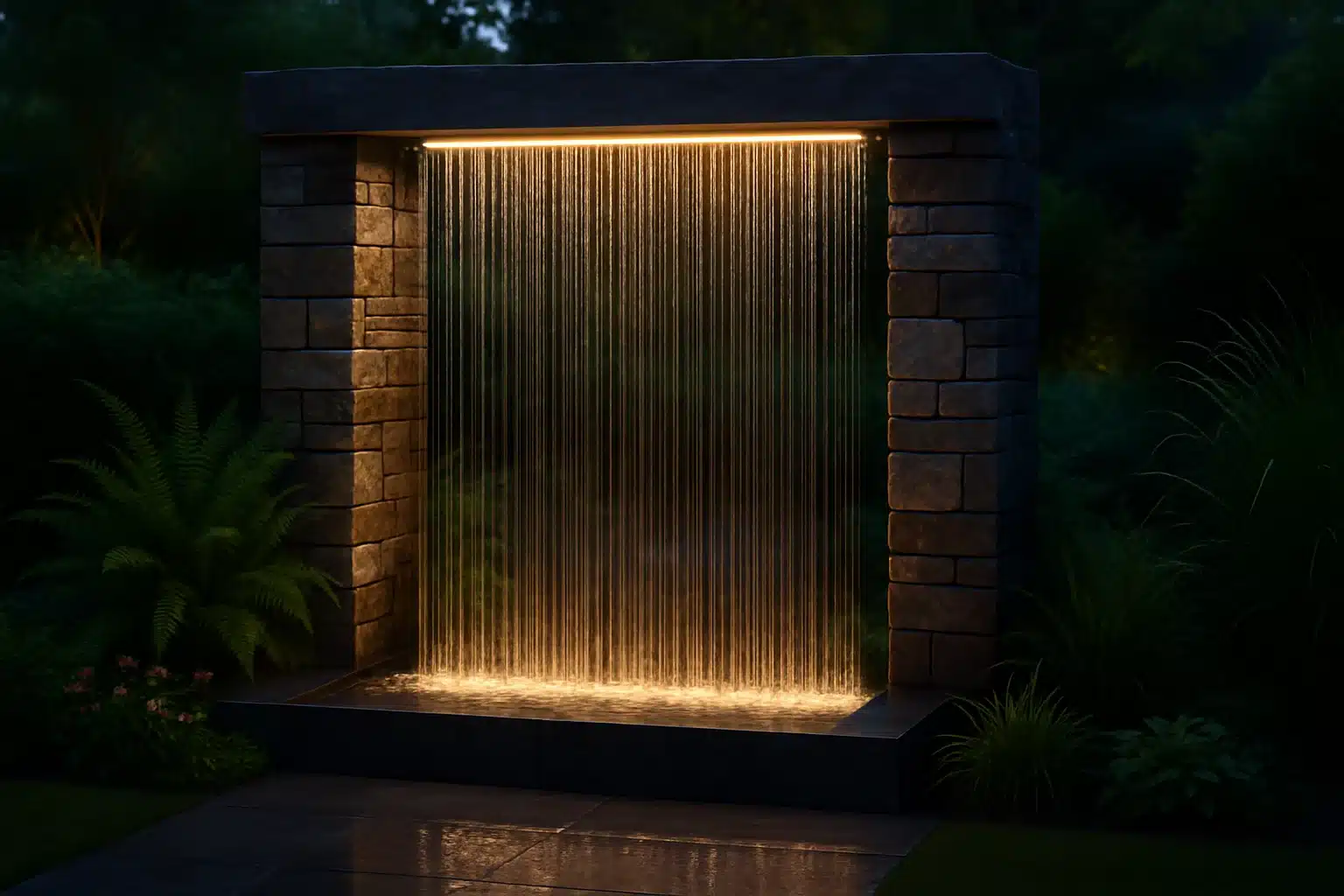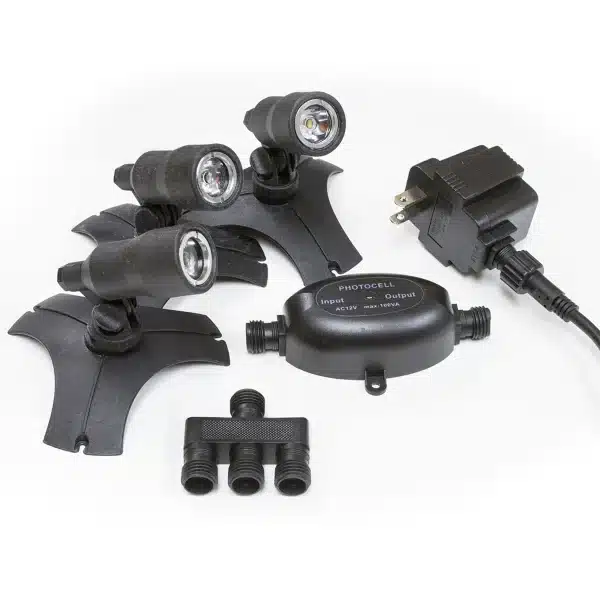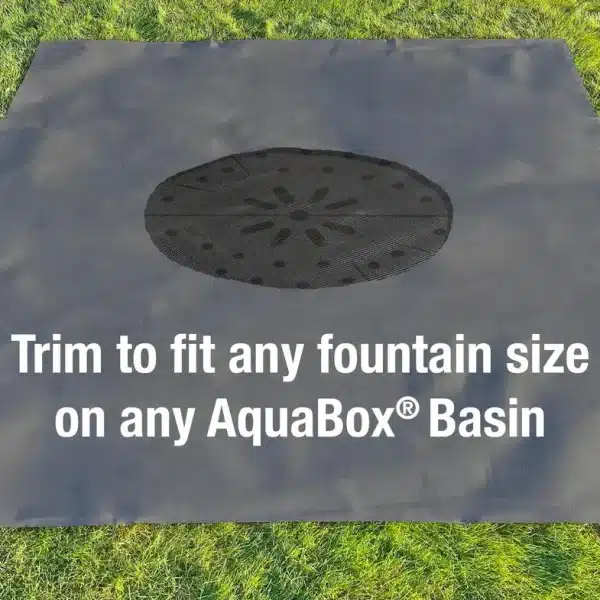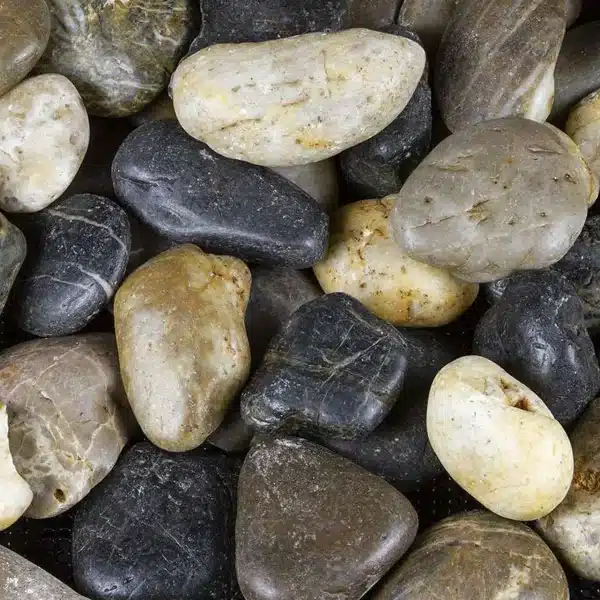Introduction: The Magic of Flowing Water Indoors and Outdoors
There’s something truly enchanting about the sound of flowing water. Whether it’s the trickle of a tabletop fountain, the soothing flow of indoor water fountains, or the grandeur of outdoor fountains in a garden, water features instantly elevate any space. One of the most breathtaking trends in home design and landscaping today is the water curtain, sometimes called a rain curtain fountain or a waterfall wall.
These unique water features create the effect of a shimmering sheet of falling water, almost like rain suspended in mid-air. The good news? You don’t need to hire a luxury installer to enjoy this effect. With some clever DIY techniques, you can design and build your own DIY water curtain, giving your home or garden that spa-like ambiance without breaking the bank.
In this guide, we’ll explore:
- What makes water curtains so captivating.
- Materials and tools you’ll need for a DIY rain curtain water feature.
- Step-by-step building methods for indoor and outdoor setups.
- Creative variations for garden fountains, wall fountains, and tabletop designs.
- Maintenance tips to keep your water feature running beautifully.
By the end, you’ll feel confident about creating your very own water curtain, an affordable, stunning alternative to high-end waterfall installations.
Why Choose a Water Curtain?
Water curtains stand out among other water features because of their elegance and versatility. Unlike traditional fountains that shoot water upward or cascade downward from a tier, a rain curtain creates a smooth, vertical sheet of falling water that looks like liquid glass.
Here are some reasons to consider a DIY water curtain:
- Visual Impact – They add instant sophistication to indoor and outdoor spaces.
- Relaxation – The gentle sound of falling water reduces stress and promotes calmness.
- Air Quality – Indoor water fountains, including water curtains, help add humidity to dry rooms.
- Flexibility – They can be scaled down into tabletop fountains or scaled up into full garden fountains.
- Customization – You can adapt them to fit your budget, style, and available space.
Indoor vs. Outdoor Water Curtains
Indoor Water Curtains
- Great for wall fountains in living rooms, offices, or entryways.
- Can serve as room dividers with an elegant flowing water effect.
- Work beautifully with floor fountains or even tabletop fountains for smaller spaces.
Outdoor Water Curtains
- Ideal for patios, decks, or garden landscapes.
- Pair well with existing outdoor water fountains or pools.
- They can become a focal point of your garden fountains collection.
Materials and Tools You’ll Need
Building a DIY rain curtain fountain requires just a handful of basic supplies. You can source these from hardware stores, online retailers, or repurposed materials.
Core Materials
- Water pump (submersible, rated for your project’s size).
- Reservoir (a basin, trough, or waterproof container to catch water).
- Tubing or PVC pipe (to connect pump to the top outlet).
- Nozzle or drip tray (to create the even curtain effect).
- Frame (wood, metal, or acrylic, depending on aesthetics).
- Waterproof sealant (to prevent leaks).
- LED lights (optional, for nighttime glow).
Tools
- Drill and bits.
- Measuring tape.
- Saw (if building a custom frame).
- Silicone or epoxy adhesive.
- Level (to ensure water flows evenly).
Step-by-Step Guide: Building a DIY Water Curtain
Step 1: Design Your Frame
Decide if you want a freestanding floor fountain, a wall-mounted fountain, or a tabletop version. Your frame will hold the tubing, nozzle, and water reservoir.
Step 2: Install the Reservoir
Your reservoir will sit at the bottom and collect the water as it falls. For indoor setups, a sleek basin works best. For outdoor fountains, a deeper trough hidden under gravel or stones blends naturally into the garden.
Step 3: Add the Pump and Tubing
Place the pump in the reservoir and connect tubing to carry water upward. Ensure the pump is strong enough to lift water to your chosen height.
Step 4: Attach the Nozzle
At the top, the tubing connects to a nozzle or drip tray. This component is crucial—it evenly distributes water into a smooth curtain. For a DIY hack, you can use perforated PVC pipe, carefully drilled for uniform flow.
Step 5: Assemble the Frame
Secure the nozzle at the top of the frame. Make sure the falling water aligns with the reservoir below. Use a level to ensure the curtain is straight.
Step 6: Test the Flow
Fill the reservoir, plug in the pump, and test the water flow. Adjust nozzle holes or water pressure until you achieve a consistent curtain effect.
Step 7: Add Finishing Touches
Seal joints with waterproof adhesive, disguise tubing with decorative panels, and add LED lights for drama. For outdoor fountains, surround the base with stones or plants to integrate it into your landscape.
Creative Variations for DIY Water Curtains
1. Tabletop Rain Curtain Fountain
- Use a small glass container as the reservoir.
- A mini submersible pump and acrylic sheet create a desktop-friendly waterfall wall.
- Perfect for offices or bedside tables.
2. Garden Fountain with Water Curtain
- Combine a rain curtain with a pond or pool.
- Add aquatic plants for a natural vibe.
- Ideal for enhancing outdoor fountains with a modern twist.
3. Indoor Wall Fountain with Waterfall Effect
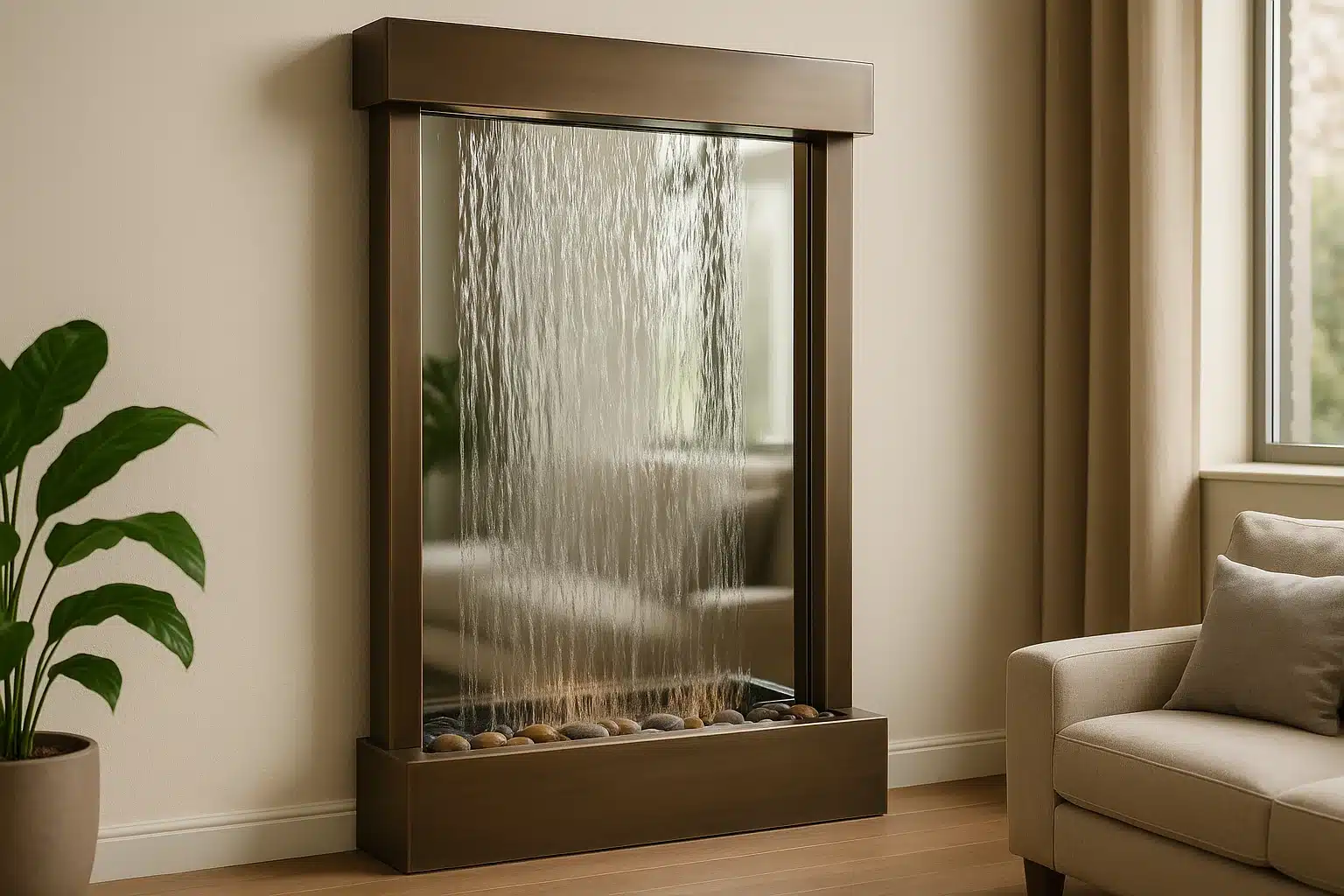
- Mount the frame directly to a wall.
- Use mirrored backing to amplify the visual effect.
- Great for foyers, yoga studios, or living rooms.
4. Floor-to-Ceiling Rain Curtain Water Feature
- For large spaces, extend your curtain from ceiling height.
- Create a dramatic room divider or entryway centerpiece.
- Works beautifully in contemporary interiors.
Maintenance Tips for Water Curtains
- Clean Regularly – Algae and mineral deposits can cloud the water curtain. Wipe surfaces and flush the pump monthly.
- Use Distilled Water Indoors – Reduces mineral buildup and keeps indoor fountains sparkling.
- Check Pump Filters – Clean out debris to avoid clogs.
- Seal Against Leaks – Inspect waterproof joints occasionally.
- Winterize Outdoor Features – In cold climates, drain and store pumps to prevent freezing damage.
Styling Ideas to Elevate Your Water Curtain
Your DIY rain curtain doesn’t just have to be functional, it can be a piece of art.
- Backlighting with LEDs: Highlight the falling water at night.
- Etched Glass Panels: Place water against decorative glass for added texture.
- Natural Stone Surrounds: Blend seamlessly with garden fountains.
- Modern Metal Frames: Sleek, industrial finishes for contemporary homes.
- Layered Curtains: Install multiple rain lines for a denser waterfall look.
Cost Breakdown: Budget-Friendly Beauty
One of the best reasons to go DIY is cost savings. Professionally installed rain curtain water features can run thousands of dollars. With DIY, you can often complete a project for under $200–$400, depending on size and materials.
- Mini tabletop fountains: $50–$100.
- Indoor wall fountains: $150–$300.
- Outdoor floor fountains with rain curtain effect: $250–$400.
Benefits Beyond Beauty
Aside from their aesthetic appeal, water curtains offer practical benefits:
- Noise Reduction – Falling water muffles ambient noise, great for busy households or urban gardens.
- Cooling Effect – Outdoor fountains and water features naturally cool surrounding air.
- Mindfulness and Wellness – Many people use indoor water fountains as part of meditation spaces.
Conclusion: Bring the Waterfall Home
DIY water curtains blend the elegance of luxury design with the satisfaction of creating something with your own hands. Whether you’re building a rain curtain fountain for your backyard, crafting a tabletop fountain for your desk, or experimenting with indoor water fountains for your living room, these projects are both practical and inspiring.
From the calming sound of cascading water to the visual drama of a shimmering wall fountain, your new water feature will transform any space into a sanctuary. With a modest investment of time and money, you can enjoy the beauty of outdoor fountains, garden fountains, wall fountains, and rain curtain water features without the high price tag.

